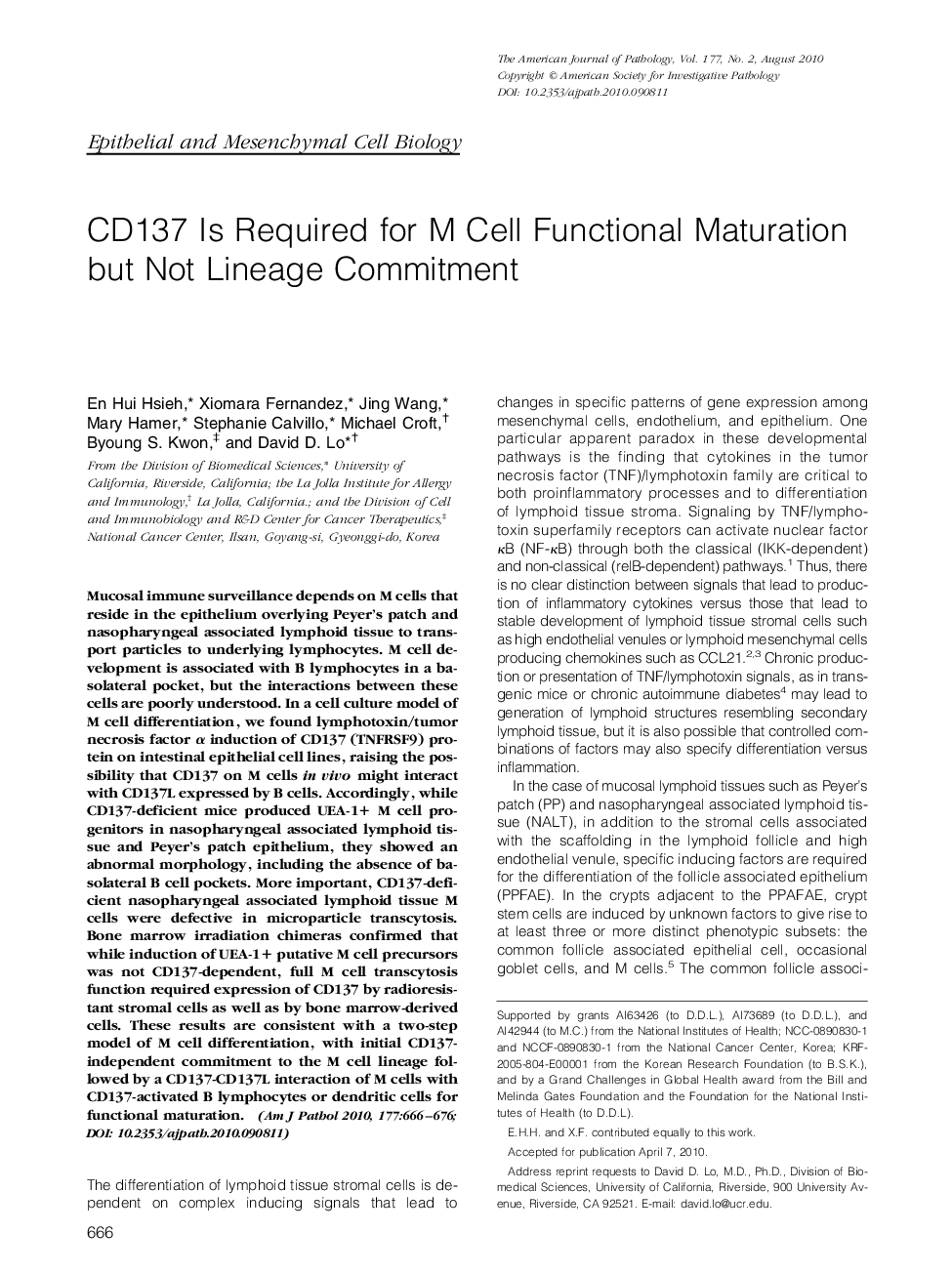| Article ID | Journal | Published Year | Pages | File Type |
|---|---|---|---|---|
| 5934935 | The American Journal of Pathology | 2010 | 11 Pages |
Abstract
Mucosal immune surveillance depends on M cells that reside in the epithelium overlying Peyer's patch and nasopharyngeal associated lymphoid tissue to transport particles to underlying lymphocytes. M cell development is associated with B lymphocytes in a basolateral pocket, but the interactions between these cells are poorly understood. In a cell culture model of M cell differentiation, we found lymphotoxin/tumor necrosis factor α induction of CD137 (TNFRSF9) protein on intestinal epithelial cell lines, raising the possibility that CD137 on M cells in vivo might interact with CD137L expressed by B cells. Accordingly, while CD137-deficient mice produced UEA-1+ M cell progenitors in nasopharyngeal associated lymphoid tissue and Peyer's patch epithelium, they showed an abnormal morphology, including the absence of basolateral B cell pockets. More important, CD137-deficient nasopharyngeal associated lymphoid tissue M cells were defective in microparticle transcytosis. Bone marrow irradiation chimeras confirmed that while induction of UEA-1+ putative M cell precursors was not CD137-dependent, full M cell transcytosis function required expression of CD137 by radioresistant stromal cells as well as by bone marrow-derived cells. These results are consistent with a two-step model of M cell differentiation, with initial CD137-independent commitment to the M cell lineage followed by a CD137-CD137L interaction of M cells with CD137-activated B lymphocytes or dendritic cells for functional maturation.
Related Topics
Health Sciences
Medicine and Dentistry
Cardiology and Cardiovascular Medicine
Authors
En Hui Hsieh, Xiomara Fernandez, Jing Wang, Mary Hamer, Stephanie Calvillo, Michael Croft, Byoung S. Kwon, David D. Lo,
